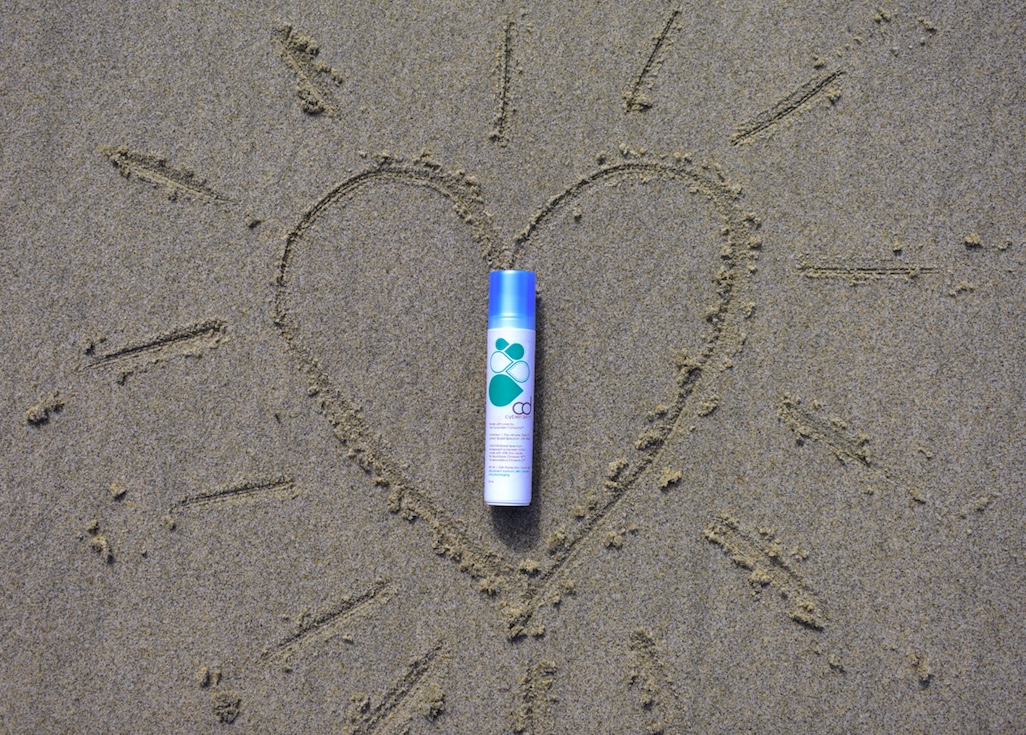
How Hawaii’s Ban On Oxybenzone And Octinoxate Could Change The Sun-Protection Segment
While the clean beauty movement may be winning over retailers, the green beauty movement is striking policy gains.
In an explosive act for the sun-protection segment, Hawaii Governor David Ige signed a bill last Tuesday, the day before fireworks were set off across the nation to mark July Fourth, to eradicate two common chemicals, oxybenzone and octinoxate, from sunscreens sold in the state by Jan. 1, 2021 to preserve coral reefs and marine life. The advancement of the ban follows President Obama’s approval of legislation nearly two years ago barring microbeads, tiny plastic particles that have been found in lakes and oceans, from products and demonstrates that the consequences of personal care usage for the planet aren’t escaping scrutiny.
Widely denounced as misguided by large beauty trade groups, chemical industry organizations, skin-cancer prevention proponents and big sunscreen brands, the Hawaii law is expected to propel further governmental efforts involving sunscreen ingredients, amplify an ongoing increase in mineral sunscreens on the market and raise awareness about the possible environmental fallout of purchasing the 70% of sunscreens available today that contain oxybenzone, octinoxate or both ingredients. Scientific research lead by Craig Downs, executive director of the Haereticus Environmental Laboratory, tying oxybenzone to deleterious effects on coral reefs was critical in the push for the Hawaii law, although Downs’ research has been vociferously disputed by the Personal Care Products Council.
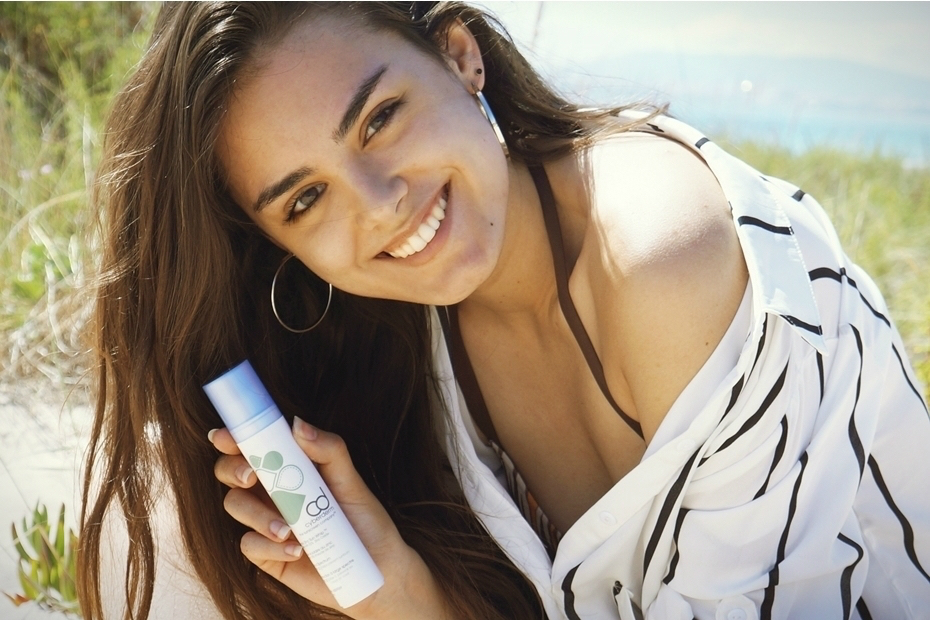
Whether the ban will transform consumer habits is an open question, but mineral sunscreen brands focusing on titanium dioxide- and zinc oxide-fueled formulas argue that it’s likely to have profound implications for the sunscreen business to the advantage of beauty startups and sunscreen manufacturers with eco-consciousness at their cores. Even prior to the attention heaped on them as a result of the Hawaii policy change, market research firm IBISWorld detected heightened demand for natural offerings in a domestic sunscreen sector poised to climb 3.6% annually thorough 2021 to hit almost $394 million in sales.
“The impact is twofold: The first is an important step in helping to stabilize and improve the environment in Hawaii, which is hugely dependent on maintaining its pristine ocean environment,” says Karl Halpert, president and CEO of Private Label Select, an organic cosmetic manufacturer. “Secondly, it will draw a huge amount of worldwide attention to the issue itself. Hawaii is an iconic locale and draws tourists from around the world, especially Asia and North America. This issue will be at the forefront of what we feel is an inevitable global trend. A move such as this by the State of Hawaii conveys a great sense of urgency. This could be a mobilizing factor and generate a wave of advocacy.”
Sara Dudley, executive director at zinc oxide product specialist The Sunscreen Company, says, “The thing about the ban that is a game changer is that it’s such a concrete form of action. You can imagine sitting on a beach, not necessarily just a beach in Hawaii, but any beach, and pulling out your sunscreen. I think the fear of getting disapproving looks will be a powerful motivator to change behavior across the board, and brands are going to have to respond.”
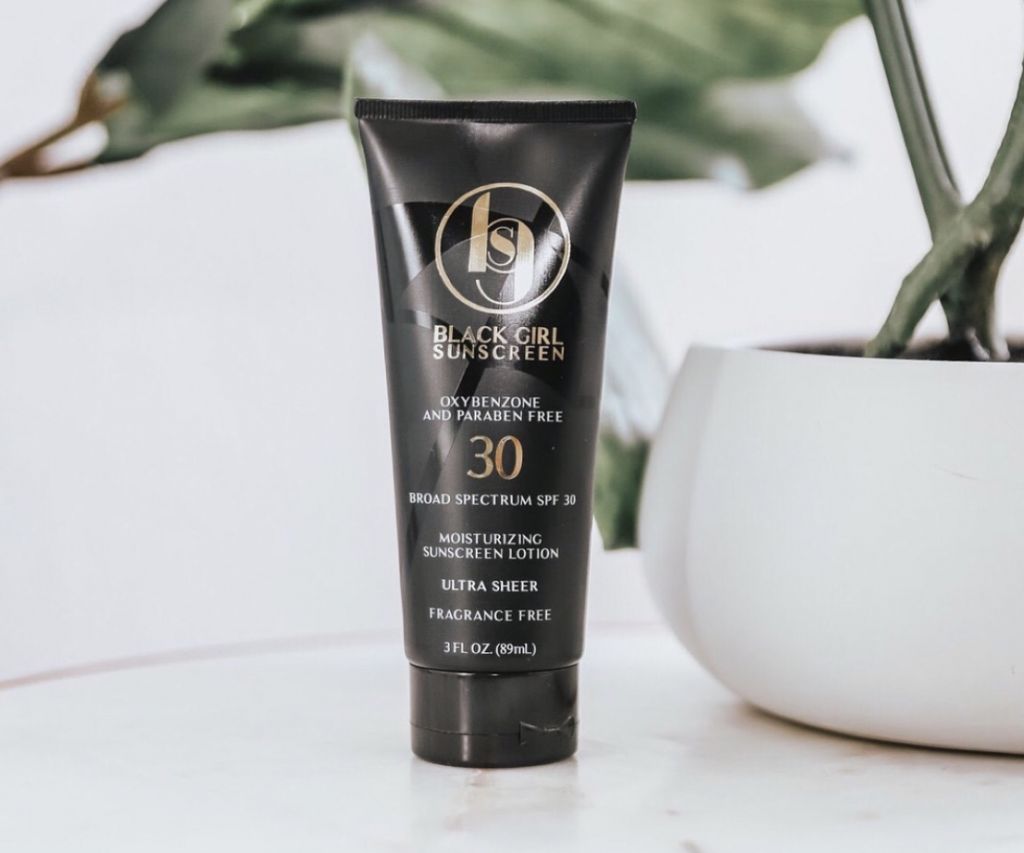
Sunscreen brands are responding by promoting their sun-protection products as reef safe and highlighting the ingredients they exclude. Black Girl Sunscreen, for example, pronounces on packaging that its SPF 30 Moisturizing Sunscreen Lotion doesn’t have oxybenzone. “It’s important to know what is not in a product as well as what’s in a product,” says Shontay Lundy, founder of the brand. “I knew that our competitors weren’t necessarily oxybenzone-free and weren’t talking about being oxybenzone-free. We were ahead of the curve.”
“The thing about the ban that is a game changer is that it’s such a concrete form of action. You can imagine sitting on a beach, not necessarily just a beach in Hawaii, but any beach, and pulling out your sunscreen. I think the fear of getting disapproving looks will be a powerful motivator to change behavior across the board, and brands are going to have to respond.”
All Good, a brand that’s long touted reef-safe products, is amplifying messaging around the environmental costs of conventional sunscreens with its The River to Reef Friendly Campaign. “It has been found that oxybenzone and other chemicals reach coral reefs, not only from swimmers [and] snorkelers in the ocean, but by washing off in the shower, by urine traveling in wastewater systems and by being carried from rivers to the ocean. In short, one’s choice of sunscreen matters whether they’re in Hawaii or in Colorado,” says All Good founder Caroline Duell. “Additionally, studies support the concern of chemical sunscreens negatively impacting species in fresh water ecosystems. We are carrying the issue beyond the reefs.”
The reef-safe descriptor as a marketing term is already under fire. Dudley is troubled by its lack of definition. “I think the term reef safe will start popping up more, but I’m actually against those types of label claims. There is actually a fair bit of really complicated science that should not necessarily be boiled down into a two-word label claim,” she says. “Most importantly, it is not a regulated term, so it will be manufacturers deciding what it means, which will run the risk of having it lose meaning. For instance, if you Google reef-safe sunscreens, sunscreens with a whole host of actives turn up, some including with oxybenzone.”
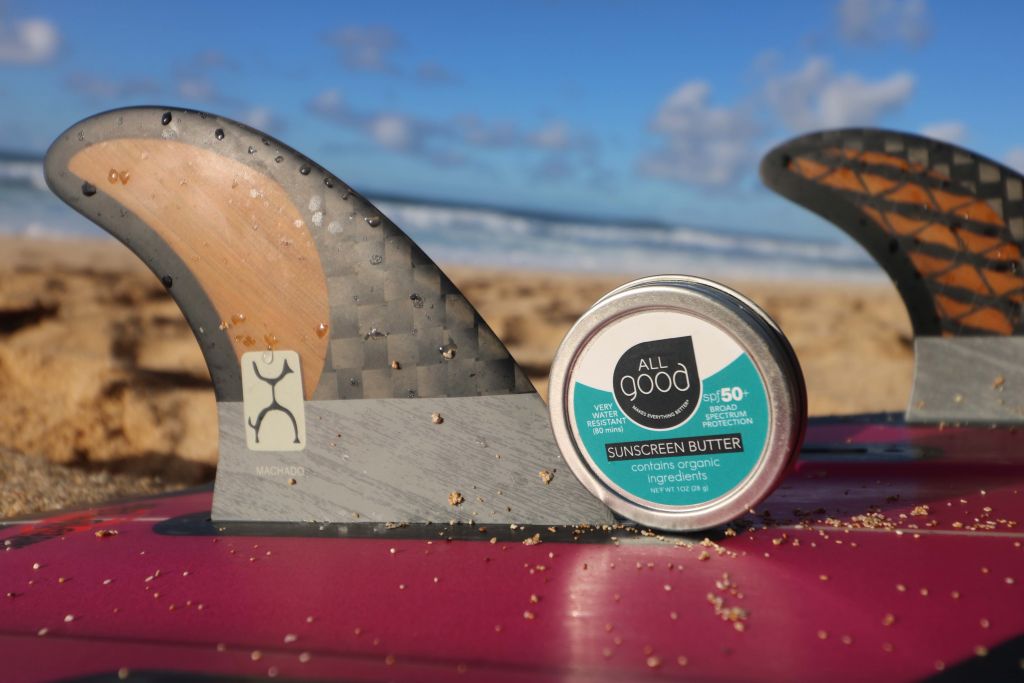
Regardless of the value of reef safe as a marketing term, mineral sunscreen brands are employing it to differentiate their merchandise from the merchandise of mainstream sunscreen brands incorporating oxybenzone and octinoxate into formulas. The massive mainstream brands have a lot banking on uninterrupted sales of bestselling sunscreens with substantial followings and footprints at retailers, and often been late to the mineral progression in the personal-care arena.
“Not only will beaches and resort areas begin banning the chemical sunscreens, but more attention will be drawn to the dangers of these materials ending up in the waters. We can envision a time when progressive countries begin to ban the use of these chemicals altogether, similar to the fate of the pesticide DDT, which is now banned in all but a few countries.”
“As is the normal impetus for indie brands to get started, they just saw a lack of options in what the big brands were delivering and wanted to provide their own solutions,” says Dudley. Steven Q. Wang, founder of Dr. Wang Herbal Skincare and chair of the Photobiology Committee at the Skin Cancer Foundation, an opponent of the Hawaii ban, says, “For a large brand, it will be difficult for them to swap out [the sunscreen ingredients forbidden in Hawaii], but a smaller brand will shift to using titanium dioxide and zinc oxide.”
Small brands may have the upper hand now with mineral sunscreens, but conglomerates will adjust. “This will be market-driven,” says Halpert. “Not only will beaches and resort areas begin banning the chemical sunscreens, but more attention will be drawn to the dangers of these materials ending up in the waters. We can envision a time when progressive countries begin to ban the use of these chemicals altogether, similar to the fate of the pesticide DDT, which is now banned in all but a few countries.”
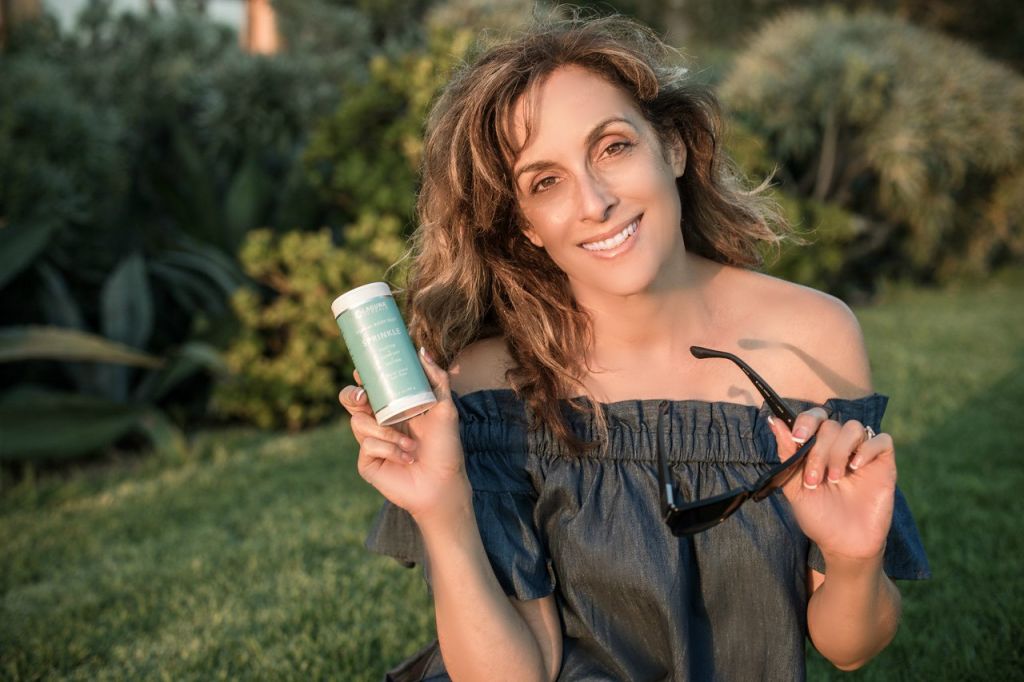
Large sunscreen players undoubtedly will unveil mineral options or spotlight existing options without oxybenzone and octinoxate for customers gravitating toward sunscreens that follow Hawaii’s lead. Edgewell Personal Care, the company behind Banana Boat and Hawaiian Tropic sunscreens, shared with Beauty Independent that two-thirds of Banana Boat and Hawaiian Tropic products are made without oxybenzone and octinoxate. “While the science around coral reefs is evolving, at Edgewell Personal Care, we respect the need to protect the environment,” the company says. “We always work with experts to evaluate the ingredients we use and are proud that we have introduced products with simplified formulas to meet consumers’ interest.”
“This consumer preference will continue to push larger corporations and mainstream brands toward mineral-based ingredients. Long term, we may start to see FDA action and an update to the technical monograph governing the over the counter sunscreen market. Specifically, I think that some of the newer active ingredients that are available in European sunscreens may now be brought to market.”
Retailers’ interests factor into sunscreen market adaptations, too. Andrea Sands, founder of Laguna Herbals, predicts mineral sunscreens will make significant inroads at stores. “First, the apothecaries and green beauty boutiques will most likely broaden their offering to include mineral block sunscreens using zinc and/or titanium dioxide as the only active ingredients for sun protection. Second, grocers with broad organic [and] natural merchandise mixes like Whole Foods have a selection, but will likely take a closer look at modifying given the new legislation. Third, specialty beauty retailers like Ulta and Sephora will continue to grow their offering of green beauty and, potentially, include safe sunscreens,” she says, noting, “Beach stores and resorts in Hawaii are actively researching and ordering.”
The momentum toward mineral sunscreens could slow, however, if Hawaii represents an exception and actions on oxybenzone and octinoxate end with the state. Few mineral sunscreen experts believe that will be the case. In fact, they foresee a future filled with Hawaii’s legislation being replicated elsewhere, and the possibility that the U.S. Food and Drug Administration, the federal agency that evaluates sunscreen products as over-the-counter drugs, will allow a multiplication of the number of permissible sunscreen ingredients to enhance UV protection and eco-friendly sunscreen capabilities.
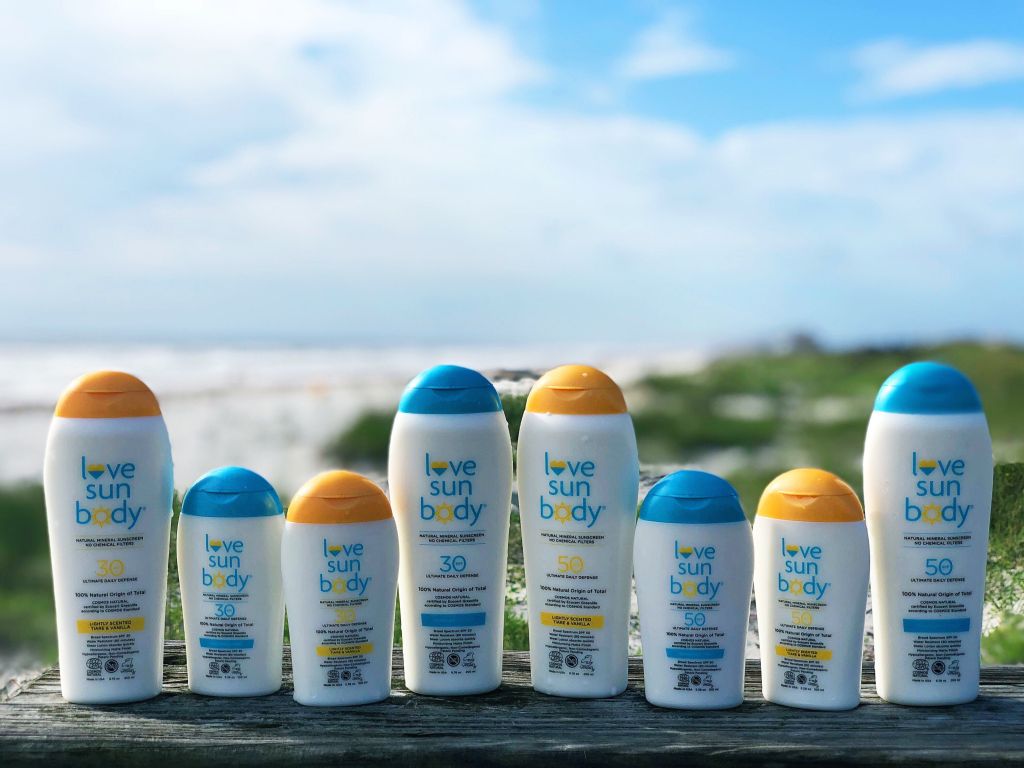
“This consumer preference will continue to push larger corporations and mainstream brands toward mineral-based ingredients,” speculates Stephanie McGraw, founder of New Heights Naturals. “Long term, we may start to see FDA action and an update to the technical monograph governing the over the counter sunscreen market. Specifically, I think that some of the newer active ingredients that are available in European sunscreens may now be brought to market.” Dudley concurs and elaborates, “The FDA has stalled on adding them to the sunscreen monograph, calling for more data, dismissing the years of data that their use in Europe would provide. They have also simultaneously refused to revisit the impact of ingredients like oxybenzone. This might be the push that forces their hand.”
TAKEAWAYS
- Hawaii Governor David Ige has signed a bill that will prohibit sales of sunscreens with oxybenzone and octinoxate in the state by Jan. 1, 2021. The ban is part of an effort to preserve coral reefs and marine life.
- In the sunscreen market, indie brands have been pioneers of mineral sunscreens centered on titanium dioxide and zinc oxide. They stand to gain from consumers switching away from sunscreens with oxybenzone and octinoxate, and retailers adding mineral options to their assortments.
- Sunscreens with oxybenzone, octinoxate or both ingredients dominate the sunscreen market today. Big sunscreen companies have a lot riding on the continued performance of bestsellers with the ingredients. However, they will likely adjust to the Hawaii ban by introducing mineral alternatives or spotlighting their current mineral offerings, even if they are meager.
- To differentiate themselves from large players with oxybenzone- and octinoxate-driven sunscreens, emerging mineral sunscreen purveyors are promoting their products as reef-safe or not containing the banned ingredients, oxybenzone in particular. The term reef safe could increasingly be subject to concerns as it, similar to other marketing terms in the beauty industry, is unregulated and lacks a clear definition.
- Many sunscreen experts predict the U.S. Food and Drug Administration will consider permitting additional sunscreen ingredients. If the allowable list of sunscreen ingredients grows, the array of eco-friendly sunscreens on the market could expand.





Leave a Reply
You must be logged in to post a comment.